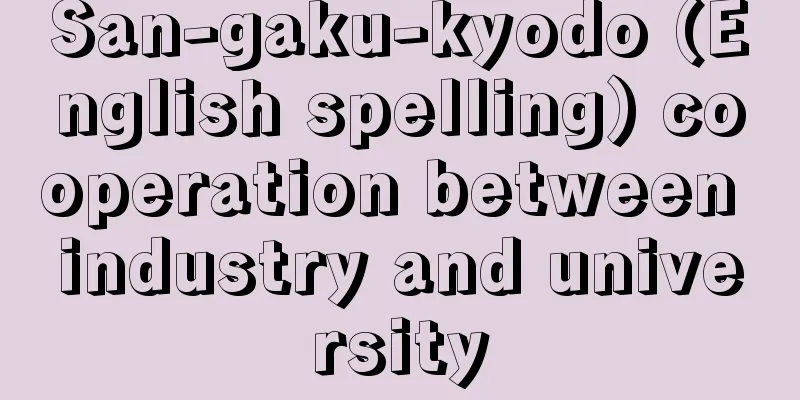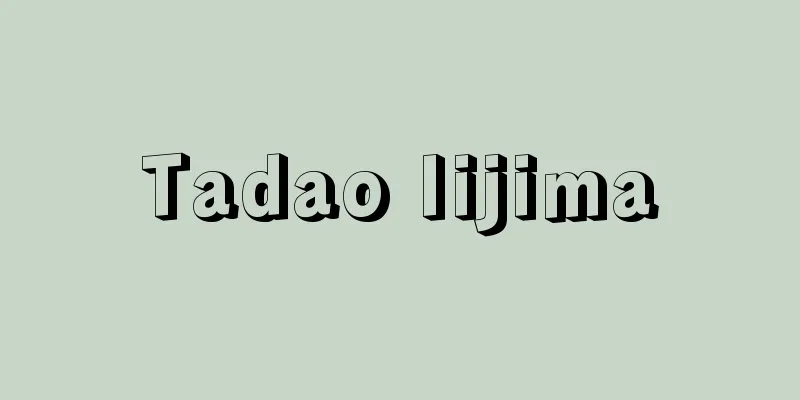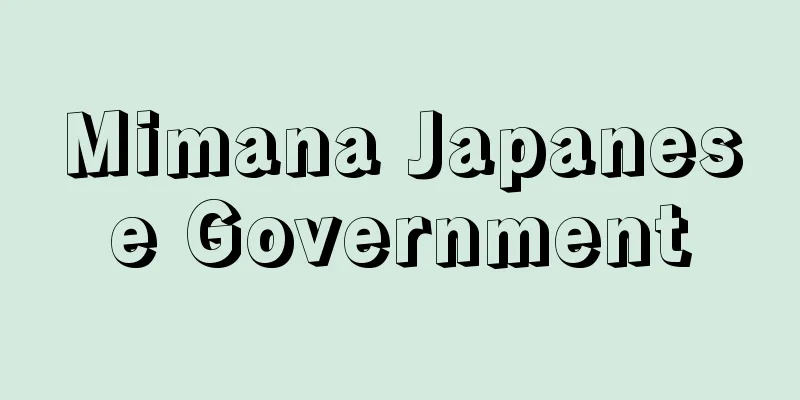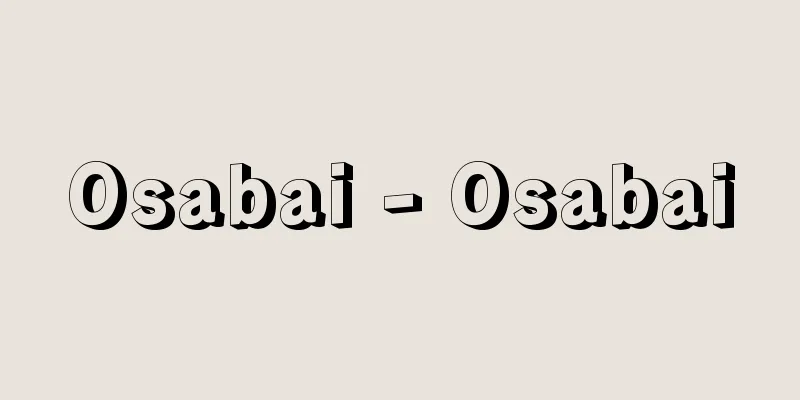San-gaku-kyodo (English spelling) cooperation between industry and university

|
It is also called industry-academia partnership or industry-academia collaboration. In this article, we will mainly refer to it as industry-academia collaboration. In the traditional and narrow sense, industry-academia collaboration refers to cooperation and collaboration in education and research activities between industry and universities. However, since the 1990s, with the establishment of a cooperative system between industry, government and academia, including the government, the content and scope of the activities have expanded to cover the basic activities of universities, such as education, research, social services, and university management, and have become more interactive. This article focuses on the relationship between universities and society, but this industry-academia collaboration is not limited to universities, but encompasses everything from primary education to higher education. Furthermore, many universities are outsourcing functions that were previously the responsibility of universities to external organizations, and are establishing joint foundations and companies. The relationship between the functions and roles of universities and the outside world is becoming more diffuse, and in the long term, universities are moving from traditional ivory tower universities to open universities. However, behind this are not only the international competition in science and technology, but also the sharp decline in the 18-year-old population in Japan, the marketization following the resolution of the East-West conflict, globalization, and the survival struggle of universities due to the transition to a knowledge-based society, and there is a demand for the construction of a new framework based on the basic ideals and roles of a truly "open university." The term "knowledge-based society" was proposed in a report by the Central Council for Education in 2005 (Heisei 17), and refers to a society in which new knowledge, information, and technology become dramatically more important as the basis of activity in all areas, including politics, economics, and culture. [Atsunori Yamanoi] ActivitiesThe main contents of industry-academia collaboration are as follows: (1) Collaboration and exchange regarding lectures, qualifications and credit recognition as a fundamental function of university education. (2) Cooperation and exchange regarding lifelong education, public lectures, and open university campuses as social service functions of university education. (3) Collaboration, cooperation, and connections between the University and the outside community, primarily the industrial sector, in terms of practical training, tours, use of facilities, internships, employment, etc. (4) Collaboration and exchange between universities and industrial education sectors such as industrial associations. (5) Institutionalization of organizations aimed at promoting university education and research, etc., and collaboration and exchange through endowed lectures, donation-based projects, etc. (6) Revitalizing personnel exchanges between industry, government and academia (students sent from companies, university faculty members sent to other institutions, regular personnel exchanges, etc.). (7) Promoting and establishing systems for joint research projects, commissioned research, joint business ventures, etc. (8) Utilization and exchange of inventions, patents, and intellectual property rights as research results. (9) Promote the outsourcing of university functions (from university education, entrance examinations, student recruitment, administrative work, market research, university management, to waste disposal). (10)Others. [Atsunori Yamanoi] History and challengesThe origins of industry-academia collaboration are generally said to date back to policies enacted by Harvard University President CW Eliot (1834-1926) in 1899 and University of Cincinnati President H. Schneider (1872-1939) in 1906. The former was put into practice at Harvard's Business School, and the latter at the University of Cincinnati's School of Engineering. The Schneider method in particular subsequently spread to universities across the United States, and a variety of methods were attempted, focusing on instructors, content and duration of practical training, evaluation, and forms of facility use. In Japan, the social role of universities was called into question during the Great Depression in the early Showa period, and the Japan Society of Engineering and the Ministry of Commerce and Industry's Production Committee proposed the institutionalization of industry-academia collaboration, but due to World War II, this only amounted to a reform proposal. Even after the war, the Japan Association of Industrial Education was formed in 1952 (Showa 27) on the recommendation of the American Industrial Education Advisory Group for Japan, and an increase in factory training for students and an increase in commissioned research from industry were recognized. However, during the era of university opening, or before the time of the crisis of university conflicts, Japanese research universities tended to advocate the ivory tower-like German-style university autonomy, and there was strong resistance to cooperation with industry, so the achievements of industry-academia collaboration were limited to cooperation in technical research such as engineering, and momentum for collaboration did not pick up. Reform proposals for industrial education in Japan tended to be planned during periods of social stagnation and forgotten during periods of growth, and the realization of industry-academia collaboration in a positive sense was a challenge. Since the university conflicts of the late 1960s and 1970s, the momentum for industry-academia collaboration has grown with the intensification of international competition in science and technology and the dilution of ideological conflict. After the Science Council in 1980, the joint research system was established with the establishment of the Research Cooperation Office in the Ministry of Education's International Academic Affairs Bureau in 1982, which promoted organizationalization, such as the introduction of research cooperation departments at national universities and the start of the establishment of regional joint research centers in 1987 (with the launch of the Ministry of Education, Culture, Sports, Science and Technology as a result of the reorganization of central government ministries and agencies in January 2000, the Science Council was reorganized as the Science and Technology Council, and the International Academic Affairs Bureau was taken over by the Science and Technology Policy Bureau and the Research Promotion Bureau). Furthermore, the Provisional Council for the Promotion of Administrative Reform was established in 1985, and the Cabinet decided on the Science and Technology Outline the following year, and the University Council (which became the Central Council for Education's Subcommittee on Universities in 2001) was established in September 1987 based on the report of the subsequent Provisional Council on Education. After the outline of university establishment standards was drawn up in 1991 (Heisei 3), various reforms were rapidly implemented at universities as institutions open to society across all university functions (education, research, social services, university administration, etc.) until the enactment of the University Technology Transfer Promotion Law (TLO Basic Law) in 1998, which encouraged the establishment of Technology Licensing Organizations (TLOs). On the one hand, joint ventures have been established based on research results, while on the other hand, in the era of the IT (information technology) revolution, a joint venture was established between a leading private university and a major electronics company to provide an educational program (distance English education via a communication network).However, in this type of industry-academia collaboration, due to restrictions on the disclosure of patents and other factors, problems have arisen in research that conflict with the "principle of public ownership," which has traditionally been considered one of the ethos (value standards) of science, and in education, the relationship and connection between universities and society is also being called into question. In recent years, collaboration with the government, local governments, and other "public entities" has been promoted, and "industry-academia-government collaboration" and "industry-government-academia collaboration" have been loudly advocated. Various centers have been established at universities to promote collaboration with local communities and industry. In the midst of these trends, it is true that there is a demand to establish a new direction in terms of the roles and functions that should be expected of universities in relation to society. [Atsunori Yamanoi] "Research Cooperation between Universities and Industry" edited by the Ministry of Education (1994) " Opening the Future: Industry-Academic Collaboration" edited by the Ministry of Education (1998) " Comparative and Evaluation Survey Report on Japan-U.S. Technical Universities from the Perspective of Industry-Academic Collaboration" edited by the Ministry of International Trade and Industry (2000) [Reference] | | | | |Source: Shogakukan Encyclopedia Nipponica About Encyclopedia Nipponica Information | Legend |
|
産学提携、産学連携ともいう。本項では、おもに産学協同と称する。伝統的また狭義の産学協同とは、産業界と大学との教育研究活動における協同、提携をいう。しかし、1990年代以降は、政府を含めた産官学の協同体制の確立によって、その活動内容や範囲は、大学の基本的営みである教育、研究、社会的サービス、あるいは大学経営などをめぐる大学の機能全般にわたり、かつ相互交流的となってきた。 本項では大学と社会の関係に焦点をあわせるが、こうした産学協同は大学ばかりでなく、初等教育から高等教育まで包摂される。さらに、従来大学の業務であった機能を外部組織に委託(アウトソーシング)したり、共同で財団法人や企業を設立する大学も少なくない。外部社会と大学の機能・役割関係は拡散化し、長期的な展望として、従来の象牙(ぞうげ)の塔的な大学から、開かれた大学に移行しつつある。しかし、こうした背景には国際的な科学技術競争はもとより、日本の18歳人口の激減、世界的な東西対立解消後の市場化、グローバル化、知識基盤社会への移行に伴う大学の生存競争があり、真の意味での「開かれた大学」の基本的理念と役割を踏まえた、新たな枠組みの構築が要請されている。なお、「知識基盤社会」とは2005年(平成17)の中央教育審議会の答申で提示された用語で、「新しい知識・情報・技術が政治・経済・文化をはじめあらゆる領域での活動基盤として飛躍的に重要性を増す社会」をさす。 [山野井敦徳] 活動内容産学協同の内容としては、おもに次のものがあげられる。 (1)大学教育の基本的役割としての講義、資格および単位の認定に関する共同と交流。 (2)大学教育の社会的サービス機能としての生涯教育、公開講座、大学開放をめぐる共同と交流。 (3)実習、見学、施設利用、インターンシップ、就職などに関して、大学と、産業界を中心とした外部社会との共同と連携・接続関係。 (4)大学と、産業団体などの工業教育部門間との共同と交流。 (5)大学教育、研究などの振興を目的とする組織の制度化、冠名講座、寄付事業などによる共同と交流。 (6)産官学間の人的交流(企業からの派遣学生、大学教員の派遣、正規の人事交流など)の活性化。 (7)共同研究プロジェクト、受託研究、共同企業化などの推進と体制確立。 (8)研究成果としての発明、特許および知的財産権などの活用と交流。 (9)大学諸機能(大学教育、入学試験、学生募集、事務業務、市場調査、大学経営からごみ処理に至るまで)の外部委託化の推進。 (10)その他。 [山野井敦徳] 沿革と課題産学協同の起源は、1899年アメリカのハーバード大学総長エリオットC. W. Eliot(1834―1926)や1906年シンシナティ大学総長シュナイダーH. Schneider(1872―1939)の政策が、その端緒であると一般にいわれている。前者はハーバードのビジネス・スクールに、後者はシンシナティ大学の工学部において実践された。とくに、シュナイダー方式は、その後のアメリカ国内の大学に波及し、指導者、実習内容、期間、評価、設備の利用形態を中心に多様な方式が試みられた。 日本においては、昭和初期の世界恐慌のもとで大学の社会的役割が問われ、日本工学会、商工省生産委員会が産学協同の制度化を立案したが、第二次世界大戦のため、改革案にとどまった。戦後も、アメリカの対日工業教育顧問団の勧告により、1952年(昭和27)に日本工業教育協会が結成され、学生の工場実習の増加、産業界からの委託研究の増加が認められるようになった。しかし、大学開放の時代、あるいは大学紛争という危機の時代以前にあっては、日本の研究大学は象牙の塔的なドイツ型大学自治を標榜(ひょうぼう)する傾向があり、また産業界への協力に対する抵抗感が強かったため、産学協同の実績は工学系など技術研究面での協力に限定され、その気運は高揚しなかった。日本の産業教育は、社会の停滞期に改革案が企画され、成長期には忘れ去られる傾向にあり、よい意味での産学協同の実現が課題であった。 1960年代後半から1970年代にかけての大学紛争以降、科学技術に関する国際競争の激化やイデオロギーの対立の希薄化に伴って、産学協同の気運が高まった。1980年の学術審議会ののち、1982年の文部省学術国際局の研究協力室新設に伴い共同研究制度が確立され、それを受けて国立大学の研究協力課導入、1987年の地域共同研究センターの設置開始など組織化が促進された(2000年1月の中央省庁再編による文部科学省発足に伴い、学術審議会は科学技術・学術審議会に改組、学術国際局は科学技術・学術政策局および研究振興局に引き継がれた)。 また、1985年の臨時行政改革推進審議会や翌年の科学技術大綱の閣議決定がなされ、その後の臨時教育審議会の答申によって1987年9月に大学審議会(2001年より中央教育審議会大学分科会)が設置された。1991年(平成3)の大学設置基準の大綱化以降は、1998年のTLO(技術移転機関)の設立を促す大学等技術移転促進法(TLO基本法)の制定に至るまで、大学機能全般(教育・研究・社会的サービス・大学運営など)にわたって、社会に開かれた装置として各種の大学改革が急激に進行した。 一方では研究成果に基づく共同企業が設立され、他方ではIT(情報技術)革命時代を迎えて、有力私立大学と大手電機企業との教育プログラム(通信網による遠隔英語教育)を行う共同設立企業も発足した。しかしこうした産学協同体制では、特許の公開制約などもあって、研究面において従来から科学におけるエートス(価値基準)の一つとされてきた「公有性の原則」に抵触する問題も生じてきており、教育面でも、大学と社会の関係と接続のあり方が問われている。 近年では、政府、自治体などの「官」との連携が促進され、「産学官連携」「産官学連携」が声高に唱えられるようになってきた。各大学において、地域や産業界との連携を促すための各種センターが設立されている。こうした動向のなかで、はたして大学に期待されるべき役割と機能は何か、社会との関係でその新たな方向性の確立が要請されていることも事実である。 [山野井敦徳] 『文部省編『大学と産業界との研究協力』(1994)』▽『文部省編『未来を拓く産学連携』(1998)』▽『通商産業省編『産学連携から見た日米技術系大学の比較・評価調査報告書』(2000)』 [参照項目] | | | | |出典 小学館 日本大百科全書(ニッポニカ)日本大百科全書(ニッポニカ)について 情報 | 凡例 |
<<: Triangular bandage - Sankakukin
>>: Mountain climate - Sankakukiko
Recommend
Three Swee Problem - Three Swee Problem
The term is used from the perspective of Danish hi...
ivy geranium
...There are groups such as the flower geraniums ...
Karpisi Country
…The remains of a capital city from the Kushan dy...
Osuzuyama Waterfalls
A group of waterfalls in the upper reaches of the ...
Patrology; patristics
The study of the Church Fathers. The word patrolog...
Huineng - Huineng
A monk from the Tang Dynasty in China. The sixth ...
Imputed rent - land rent
…Therefore, the rent for residential land will ri...
Chōshūki - Chōshūki
The diary of Minamoto no Morotoki (1077-1136), wh...
Fanal Color
…By making Rhodamine 3B into an insoluble lake wi...
Shozen - Kashiwade no Kami
…When a person from another clan became the chief...
Arimari Castle - Arimari Castle
…It was an oasis city that existed in the Ili Bas...
Phonemics
The branch of phonology that analyzes sounds or p...
River gravel - Kasenjari
… Gravel is called different names depending on w...
Recco, G. (English spelling) ReccoG
...1612-75), and Rosa, who pioneered romantic lan...
Rhinoceros unicornis (English spelling)
...Lifespan is over 50 years. [kinds] The Indian ...









